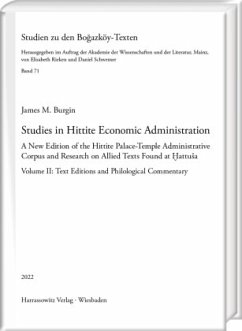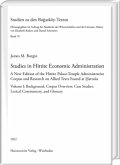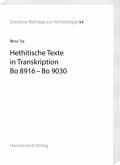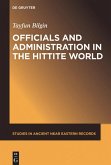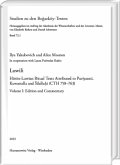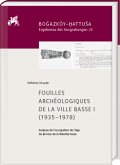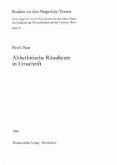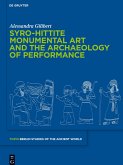The Hittite Palace-Temple Administrative Corpus constitutes the bulk of the living economic-administrative documents found at the Hittite capital of attusa. Since the last edition of the corpus, the number of available texts and text fragments has nearly doubled, from 138 to 252. Nevertheless, the corpus remains exceptionally small compared to those of contemporary Bronze Age kingdoms. The texts are furthermore distinguished by an unexpected level of detail, length, and focus on durable goods, such as textiles, metals, and religious objects. Staple products, such as foodstuffs, grain, and livestock, are nearly absent. Volumes 1 + 2 of Studies in Hittite Economic Administration address the unusual features of the preserved Hittite economic-administrative corpus while providing a comprehensive new edition. Based on current archeological and anthropological research, it is suggested that the scope and contents of the corpus are appropriate for an economic administration that was primarily designed to bind together a system of local, defensive agricultural programs through the influence of elites and communities with luxuries and religious endowments. The texts are fully edited with analysis and commentary. An analytical glossary and lexical commentary on the numerous technical terms, rare words, and realia found in the texts are also provided. A case study comparing the wealth of one of the most important texts in corpus to other sources of wealth in the Hittite kingdom is conducted. Finally, the Hittite votive corpus is evaluated from an economic perspective to demonstrate that a significant portion of Hittite religious expenditure was financed by diplomatic income.
Bitte wählen Sie Ihr Anliegen aus.
Rechnungen
Retourenschein anfordern
Bestellstatus
Storno

